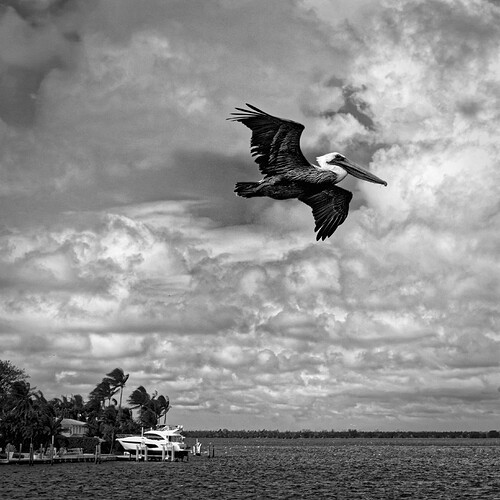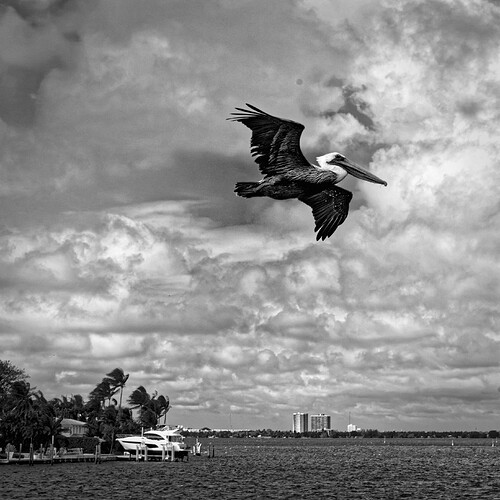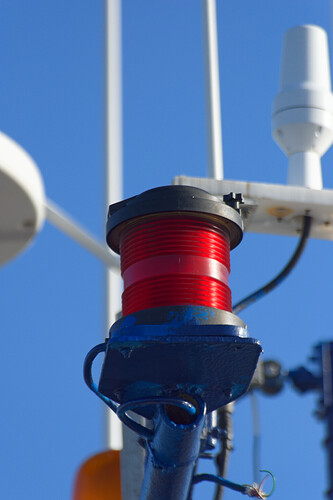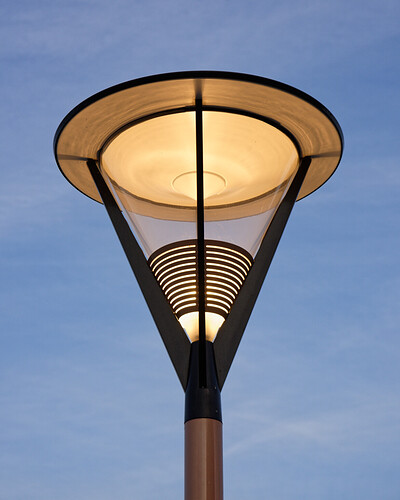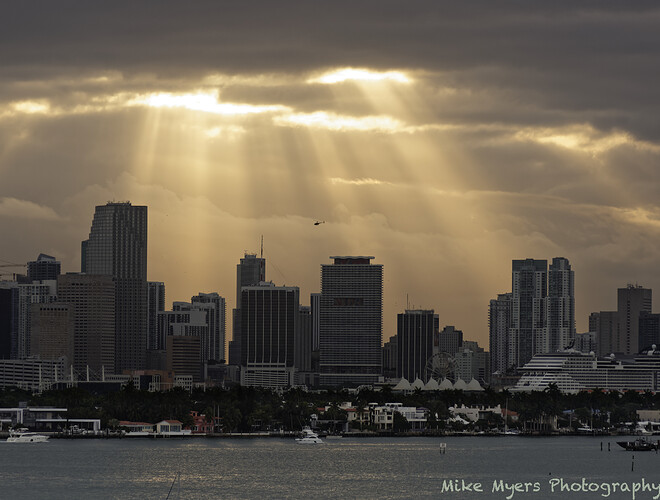Those 5 star images are very quick set in base.
Like those windmills, I do few hours for a row and every one i really like i starrate and return to after i am done the row in filmstrip, then i decide if en how i proceed.
A good photo is so much more than an faithful rendition of what was actually seen. A good image can tell a story. It can evoke an emotion, It can highlight interesting details that were overlooked when the image was captured. It can draw in the eye of the viewer. Unless you are photographing journalistic images of historically relevant events or sports photography why does an image have to represent exactly what you actually saw? In fact, more often than not exactly what one sees may make for a very boring or mediocre image depending on the content. My goal is to make images that are interesting to look at . I took your pelican image and removed the distracting background buildings and bouys, converted it to black and white, and made a number of editing adjustments including using the channel mixer which was added as part of FilmPack 5. This resulted in a image that pleases me although it doesn’t represent the actual scene as captured by you in color.
Mark
To me, that isn’t true. Once I modify an image, it is no longer a photograph. If I post it in the Leica forum, for all I know I will be banned. That thread is presumably what people can do with their Leica gear, so others can see what is possible.
My family, and friends, both here and in India know I never do stuff like that without explaining what I did, and I beat them to the punch by calling it a “photo illustration”. To avoid any complaint, I have been adding “processed in DxO PhotoLab 4” to the images I post in the Leica forum.
In your world, what you wrote is probably quite true. I would say you are an artist, and anything and everything you can do to enhance an image until it looks as good as possible, is permitted. I have no idea what you think about Luminar, but with that program, anything is possible with a few key strokes. My pelican could easily be flying over the Sahara desert, or Times Square, or in front of a brilliant sunset with a rainbow, and the moon off to the side. 
My opinion is that there is a lot of “wiggle room” for creative editing, but there are also “do not” signs which when crossed, create an image, not a photograph.
Additionally, a photo illustration most of the time looks fake, to people who are good about these things.
If it doesn’t make any difference, why not refer to it as a “photo illustration”, or simply an “image”? That fits in with the outside world, and you won’t hear a peep out of me. 
Again, the above is just my opinion, and how I see things. Obviously, everyone can follow whatever rules they wish to, or not.
Oh, and if you call your version an image, I love what you did with the Pelican! Looks wonderful!
I have no interest in Luminar. I do not add, replace, or move elements in my images. I am not interested in creating composites. I will delete or de-emphasize elements that do not have any visual value and distract the eye from the main purpose ot an image, such as the buildings in your pelican image…
Mark
There are B&W films that will give you a similar rendering to Mark’s version. With such film and an enlarger in a darkroom, you would obtain a print that looks very much the same.
Had you taken the shot with such a film camera and processed like that, you would undoubtedly call it a photograph. Why would you change your opinion because it was taken on a digital camera, which only takes in colour and is then processed on a computer to emulate that film that is no longer available?
Are you saying that only wet process film and paper qualify as a true photograph?
You, yourself, edited what we see the moment you decide to frame the shot to exclude certain things.
Is your version any less a photograph because you edited it in the camera by so framing it?
Who decides when editing begins?
Just a few questions for discussion 

I believe he was referring to my removal of the three larger buildings as well as the other manmade structures in the background, including the buoys.
I removed them because they were visual distractions and their presence added nothing of value to the image. I also removed a sensor spot above the pelican’s wing and some white dots on the other wing that were more subdued and less visible in the original color version.
I think the removal of all those modern structures simplified the focus of the image and made the scene look more natural and idyllic.
Here is the image with those distractions replaced.
Here is the version again with the distractions removed.
Mark
Easy, it was taken with a film camera, so it is automatically a photograph, and objects can’t be added or removed.
Absolutely not. Any kind of camera, even a pinhole camera, makes photographs. But only digital opens up the image to easy manipulation, like adding flowers, trees, more birds, the sky…
If it’s “art”, there are no rules. If it’s an image, ditto. Who decides? Big competitions specifically limit what is, and is not, permissible.
But there is no point in disagreeing here. I would like to back out of this discussion, and get back to PhotoLab. And I would love to be able to do all these interesting things we’ve been discussing. I feel free to do anything I want, but to keep my brain happy, I won’t call the result a photograph even if everyone else here does. 

Please see Jerry Uelsmann’s work. Long before digital, he was using up to 8 enlargers to add and subtract things to(from) his images.
“photomontage technique”… wow! What an imagination! Thanks for the link.
Nice link. I know these surrealistic worlds mostly from paintings and drawings.
Though there is a big difference between manipulating images in tis way and by example you did with the pelican. The first one is creating a complete new world, the pelican modified an existing world.
Leaves me with the question why these buildings you removed are distracting subjects. Or why garbage in the boat pictures had to be removed.
George
I am the one who did, so i answer this.
I have no rule in photograph or image, i call everything a image and i don’t sell nor compete in competitions so no boundery’s there either.
My main rule is does it look natural? Then does it represent my memory or goal?
We are in the real life very selecting in looking, hence the different eye withnes reports all the time and we ignore distracting things by nature. In the stone age your life depended on that ability. He: “what’s that for nice looking…”… Blammm eaten by a bear or sabeltooth tiger…
But with looking at stills we have more time to see details and then the filter is less active. So those leaves are distracting, they attracts your eye’s and your brain tries to identify it. (als natural.) the more difficult to identify the more it distract.
And if this distraction has no part of the composition i remove it so the image improves in strenght. Same as a half person or a legg, arm, treebranch, garbage, bird.(if it’s just a blob, small spot in the air then i remove it because it’s like a dustspot.)
Anyway that’s my way of thinking. Everyone is free of choice unless it’s choice is colliding with a goal he’s asking trying to get, then it’s fair game to point out his or her flaw in thinking. And even then he or she may do what to there liking. Showing an other way don’t mean it’s the right way. Just an other way.
Peter
I didn’t address to somebody specific. It was just part of this thread.
This is not a law. It’s what you think is important for you. Not for me or somebody else.
George
Well, it just goes to show how insignificant those things are in the frame on a quick glance but, had I bought the image to hang on the wall, I would have been ever so slightly annoyed to discover how distracting those things were on closer inspection.
I think that is mainly what I do.
I noticed this effect when driving. Sometimes I will catch a glimpse of a scene that looks amazing whilst going past it, only to stop to take a photo and find that it looks nothing like what I perceived whilst moving.
Clouds are most frustrating because, whilst they are moving, you get a sense of 3D, which is very difficult to capture in a single still shot. This may be why some use ClearView Plus to try and separate the clouds more. The truth is, what you saw, whilst watching the clouds moving, is impossible to capture in 1/1000 second. To me, that justifies enhancing the contrast in order to record what I not only saw but experienced.
@mikemyers I am willing to bet that you didn’t even see the buildings on the horizon when you took the pelican shot. Your vision was on the main subject that you wanted to capture - the pelican. If that is what you were looking at, then removing things that distract, either by judicious framing or by cloning out, is better showing what you saw and wanted others to see in the photo. I can imagine someone looking at your photo and commenting on the buildings rather than what you perceived to be the subject. And it’s even worse when someone is distracted from the subject by things that catch the eye and draw it away form the intended focus of the image.
I really do get why you (Mike) think like you do about photojournalism but don’t forget, sometimes the most dangerous edit can be done when you take the picture - framing to avoid seeing what was going on around the subject.
When we were looking for a house here in France, we saw a lovely little cottage on the internet and asked the agent to take us to see it. What the (unretouched) photos didn’t show was that it was within metres of a pig farm!!! And yet such a photo fully qualifies as an accurate record of what was there and would be valid for a photojournalistic competition - just not a record of all of what was there 
Mike, you must understand better than most how difficult it can be to capture a vehicle moving at speed, that is sharp, without getting the background sharp as well, thus looking like someone had just parked the vehicle. The key is to not only capture what you saw in an instant (a car on a race track) but also to convey that sense of speed that you experienced at the time.
As others have said, if you need to follow “rules” to validate an image for a competition or the like, then fine - do so for those situations. But I guess that not every photo that you take is going to be for that purpose. So, whilst you are not working as a photojournalist, and for the pleasure of others, try making images that are pleasing to look at rather than simply acting as a record of “facts”. That way, you will give yourself much more material to practice your editing skills in PL, some of which will benefit your “factual” work.
Since it seems to be difficult to take wider shots which do not contain distractions, try the challenge of taking small details like these…
from your above post (to Mike)
"Since it seems to be difficult to take wider shots which do not contain distractions,
try the challenge of taking small details like these… "
To concentrate on interesting subjects is often easier to do with a good telezoom lens
– and also saves cropping.
@mwsilvers and everybody in this discussion
Your comparison in DxO PhotoLab 4 and Candid Photos shows a valid point. These big white buildings, being on the same vertical axis like the pelican, can easily distract from the subject – proven by your ‘clean’ version.
To me, it’s because you cropped the pic to square and converted to B&W. In this version, I would reduce the brightess of the boat to give the pelican a bit more importance. Maybe a gentle vignette would also help. Otherwise it’s fine (and yes, you were talking to Mike to show him his nice photo).
A different solution is this from PhotoLab 4 with X-rite i1Display Studio display calibrator First, being a colour version, the dark pelican with its bright beak (high contrast to cyan) dominates the sky. But then also with the landscape format, the buildings along the skyline appear less relevant. When you check the enclosed dop-file, you see that I also balanced the brightness of the boat and the buildings to the pelican’s head and neck. Like this, the three white ‘patches’ form a triangle and support the subject
– at least that was my idea.
and most importanly – have fun, Wolfgang 
If this had been my image I might have put in more time considering additional modifications such as more vignetting and the brightness of the boat. My goal, though, was a quick demonstration for @mikemyers that a strict adherence to images that look exactly like the photographer saw them can often result in less satisfying images…
Mark
Yeah, Mr. or Mr. Pelican came flying by me, and I captured a series of images as it moved from left to right. If I do this again, I’ll use a wider aperture for less depth of field.
You are right, I was completely oblivious to the buildings.
Some days, there are pelicans all around me. There days, there are none.
This photo was taken yesterday. I just got my second Covid-19 shot, and I wasn’t in the mood for doing much, but when I looked out my window and saw this, I grabbed my D750 with 80-200 lens. There weren’t all that many corrections. The “holes” in the sky looking into the bright sunlight are burnt out - my fault - but I don’t know how I could have prevented it. White balance was on the cruise ship, which I also lightened a little.
I thought about brightening up the buildings, but they were all in shadow, and what you see here is how it looked to me. Ditto about bringing out the trees a little more.
Any advice or suggestions? Anyone want to try to interpret it differently?
